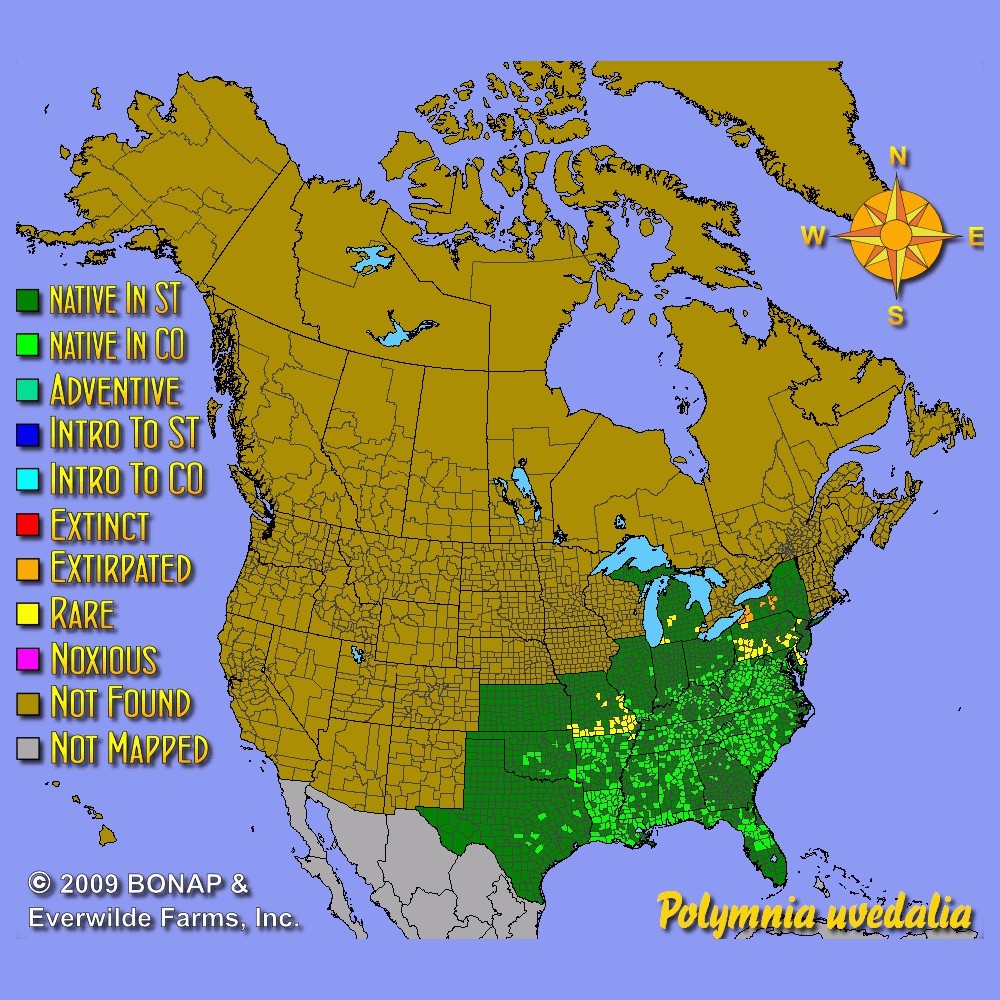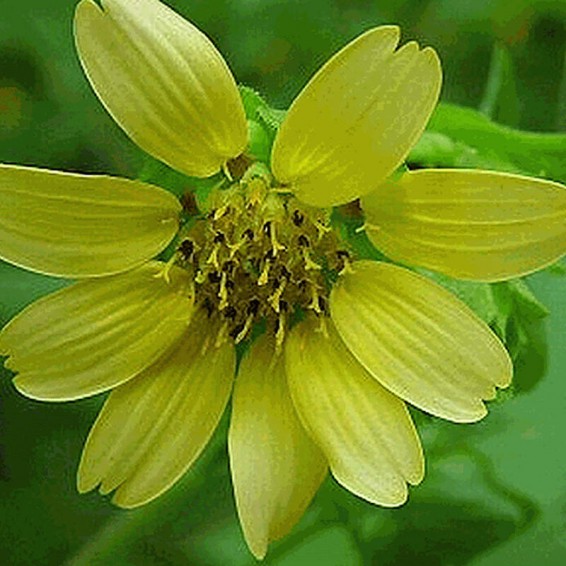Bear's Foot Seeds
- HOW TO GROW
- FAST FACTS
- REVIEWS
HOW TO GROW
Sowing: To help soften the hard coating on these bear's foot seeds and speed germination, pour hot water over the seeds and allow them to soak for 24 hours before planting. Direct sow in late fall, planting just below the surface of the soil. For spring planting, mix the soaked Polymnia Uvedalia seeds with moist sand and store them in the refrigerator for 60 days before planting. Keep the soil lightly moist until germination. This seed can also be started indoors 6-8 weeks before planting in the spring.
Growing: Water seedlings until they become established. Mature plants tolerate drought, though they prefer moist soil and will benefit from watering in dry weather. The bear's foot plant attracts bees and butterflies, and tends to resist deer and disease.
Harvesting: For cut flowers, choose stems with flowers that have just opened. Strip the foliage that will fall below the water level, and place in water immediately.
Seed Saving: As the flowers mature, they will drop their petals and develop seed heads. Since small birds love to eat the seed, harvest it promptly to avoid loss. As soon as the seed ripens in the seed heads, gather the heads and separate the seed from the husk. Store the bear's foot seeds in a cool, dry place.
FAST FACTS
Latin Name: Polymnia uvedalia
Species Origin: US Native Wildflower
Type: Native Wildflowers
Life Cycle: Perennial
USDA Zones: 5, 6, 7, 8, 9
US Regions: Plains/Texas, Midwest, Northeast, Southeast
Seeds per Ounce: 290
Stratification: Cold/Wet for 4 Weeks
Germination Ease: Stratify 4 Weeks
Sunlight: Full Sun, Part Sun
Height: 100 Inches
Color: Yellow
Bloom Season: Blooms Late Summer, Blooms Early Fall
Waste of time and resources!
We wanted to grow this plant as a screen for a couple pollinator gardens, but these seeds were useless. Very disappointed to say the least. We successfully grow over 45 types of plants on our small farm (including plants that require cold stratification) and these were the only seeds that failed to germinate... not even one seed. What a dud!
DESCRIPTION

HOW TO GROW
Sowing: To help soften the hard coating on these bear's foot seeds and speed germination, pour hot water over the seeds and allow them to soak for 24 hours before planting. Direct sow in late fall, planting just below the surface of the soil. For spring planting, mix the soaked Polymnia Uvedalia seeds with moist sand and store them in the refrigerator for 60 days before planting. Keep the soil lightly moist until germination. This seed can also be started indoors 6-8 weeks before planting in the spring.
Growing: Water seedlings until they become established. Mature plants tolerate drought, though they prefer moist soil and will benefit from watering in dry weather. The bear's foot plant attracts bees and butterflies, and tends to resist deer and disease.
Harvesting: For cut flowers, choose stems with flowers that have just opened. Strip the foliage that will fall below the water level, and place in water immediately.
Seed Saving: As the flowers mature, they will drop their petals and develop seed heads. Since small birds love to eat the seed, harvest it promptly to avoid loss. As soon as the seed ripens in the seed heads, gather the heads and separate the seed from the husk. Store the bear's foot seeds in a cool, dry place.
FAST FACTS
Latin Name: Polymnia uvedalia
Species Origin: US Native Wildflower
Type: Native Wildflowers
Life Cycle: Perennial
USDA Zones: 5, 6, 7, 8, 9
US Regions: Plains/Texas, Midwest, Northeast, Southeast
Seeds per Ounce: 290
Stratification: Cold/Wet for 4 Weeks
Germination Ease: Stratify 4 Weeks
Sunlight: Full Sun, Part Sun
Height: 100 Inches
Color: Yellow
Bloom Season: Blooms Late Summer, Blooms Early Fall
Reviews
Review
Waste of time and resources!
We wanted to grow this plant as a screen for a couple pollinator gardens, but these seeds were useless. Very disappointed to say the least. We successfully grow over 45 types of plants on our small farm (including plants that require cold stratification) and these were the only seeds that failed to germinate... not even one seed. What a dud!




